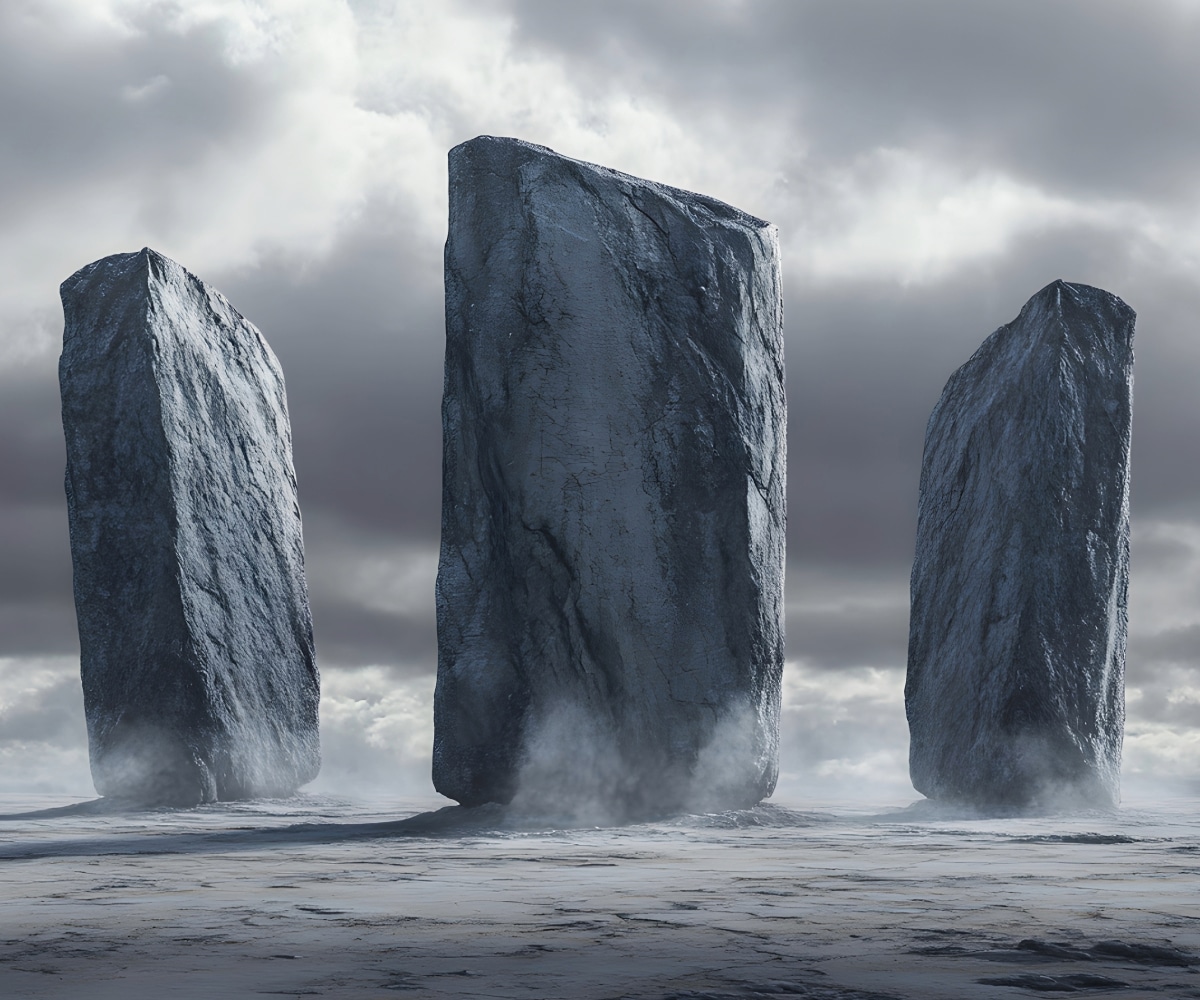Your cart is currently empty!
Wakeless River Blog
Welcome to the Wakeless River Blog.
Here you’ll find my thoughts about books, writing, and navigating a literary life.
Or maybe they’ll find you.
-
The End is Only the Beginning
When you’re writing your novel, story, or screenplay, the end of your story may seem like an eternity away. It might even seem like the easiest part of the process to ignore, but that couldn’t be further from the truth. Your ending doesn’t have to be epic or grandiose; it just needs to wrap up…
-
A Tale of Three Genres
Sci-fi, fantasy, and sci-fantasy are three of the most popular genres out there in books, movies, and video games. But what makes them different? And what makes them similar? Are they all just sci-fi with different names, or do they each have distinct differences? There are plenty of stories that mix and mingle the elements…
-
The Story Your Bookshelf Tells
Your bookshelf tells a story all its own. If you’re like me, yours is probably stuffed with books that don’t fit on it anymore because you can’t bear to part with them — even if they have no practical use in your life anymore. If your bookshelf could talk, it would tell the story of…
Latest Posts
- The End is Only the BeginningWhen you’re writing your novel, story, or screenplay, the end of your story may seem like an eternity away. It might even seem like the easiest part of the process to ignore, but that couldn’t be further from the truth. Your ending doesn’t have to be epic or grandiose; it just needs to wrap up… Read more: The End is Only the Beginning
- A Tale of Three GenresSci-fi, fantasy, and sci-fantasy are three of the most popular genres out there in books, movies, and video games. But what makes them different? And what makes them similar? Are they all just sci-fi with different names, or do they each have distinct differences? There are plenty of stories that mix and mingle the elements… Read more: A Tale of Three Genres
- The Story Your Bookshelf TellsYour bookshelf tells a story all its own. If you’re like me, yours is probably stuffed with books that don’t fit on it anymore because you can’t bear to part with them — even if they have no practical use in your life anymore. If your bookshelf could talk, it would tell the story of… Read more: The Story Your Bookshelf Tells
- Poetry, Songs, and LoreCreating worlds and crafting stories can be an enjoyable and rewarding process. However, crafting your world down to the smallest detail can take time and energy, and sometimes it’s hard to figure out how everything fits together in your universe. This is where lore comes in. It’s a great way to add depth and weight… Read more: Poetry, Songs, and Lore
- Bring On The Backstories!What makes a character seem real? Why do we empathize with some characters and not others? Backstory. Every character has one, even if we don’t know it (we’ll come back to this later). It’s what gives them depth and makes them relatable (or not). A well-rounded character needs a backstory. Why are they the way… Read more: Bring On The Backstories!
- The Black Hole on the Blank PageIf you have ever tried to write without starting from something tangible, you know it isn’t easy to do so. You might even spend more time deciding on what to write than actually writing it. So why do we keep saying never start with a blank page? There are many reasons. One of them is… Read more: The Black Hole on the Blank Page
- The Nine Notes of a Well Sung StoryEvery song starts somewhere. We don’t think of it as ‘starting,’ unless we expect to sing the song. Birthday parties, concerts, even alone in our cars, we know the beginning of a song. We know, too, when it gets good, when the pitch changes, and when the singer hits that note. The one we probably… Read more: The Nine Notes of a Well Sung Story
- Stunning Stories in Summer SettingsHey, now! It’s finally summer! And what better way to spend this glorious season than by immersing yourself in the world of some of your favorite authors? Summertime and the reading’s easy. Whether you’re in the mood to read on the beach or just lounging by the pool, summer offers plenty of options for escaping… Read more: Stunning Stories in Summer Settings
- Change: Why It’s Good for WritersChanges are rarely easy, whether you’re the one making them or experiencing them secondhand. Change, though, can be an opportunity to grow in ways that may not have been possible before the change began occurring. I’ve been lucky enough to experience both sides of this equation over the past few years, and I’m here to… Read more: Change: Why It’s Good for Writers
- The Many Benefits of Co-AuthoringCo-written books can be exciting and fun to write, if you’re with the right partner. They can also be a challenging and rewarding experience, as long as you follow some basic co-authoring guidelines. With writing, some people prefer to work alone, while others would rather get in the same room with other authors and start… Read more: The Many Benefits of Co-Authoring
-
Death and it’s Brilliant Life in Fiction
For as long as people have told stories, they’ve used death to show the finality of characters’ lives and their own fears of mortality in the audience. Death serves many purposes within fiction, but its exact nature can vary widely depending on the point of view of the author and the context in which it occurs. No matter how you choose to use death in your fiction, however, there are some universal truths that every writer should know before tackling this powerful topic.
Death as Motivation
In fiction, death is often a character’s motivation. There are countless stories where someone lost their life, and now their family wants to avenge them. Although it may seem like we use death as a blunt tool to move a plot forward, it can have much more significance. In John Steinbeck’s East of Eden, Cathy Ames sees her own experience mirrored by that of her dead mother and becomes an entirely different person who finally has some semblance of what it means to be alive.
Similarly, Hamlet spends most of his story trying to exact revenge for his father, King Hamlet—and although he accomplishes that task at last through bloody murder, Hamlet gains far more from learning who he really is than from gaining a pound of flesh. It seems obvious at first glance: characters use death as fuel for action and passion in narratives all over literature. But there’s so much nuance here beyond just oh I see why you would use your parent’s or child’s death to push your character into doing something! Well done you! Instead, these tragedies—or accidental deaths or murders—can deepen our understanding of characters both within a story and outside one.
Death as Ritual
There’s something inherently fascinating about death, especially with fictional characters. Why is it a character’s death can completely enrage us, yet also moved to tears? Why is it we find value in certain character deaths and not others? We aren’t reading about real people—we can accept (for example) a murder victim as an unfortunate part of a detective novel without having our own feelings towards homicide affected. So, what makes one character’s death stick with us more than another?
The answer may lie in ritual. Whether characters are aware of their impending doom or ignorant until it’s too late (think The Sixth Sense), most fictional deaths follow a somewhat formulaic structure. What does ritual do for us? To put it simply, a pattern like death creates order where there might otherwise be chaos. By following specific steps each time we go through a process (like dying), we know how things will play out before they happen—and afterwards. This predictability comforts us; if things don’t go according to plan… well, plans rarely go off exactly as intended, anyway.
Ritual also promotes progression: knowing that things will probably turn out well after death means that you have nothing to lose by being aggressive; you’ll still end up at your ultimate destination regardless of how hard you push yourself on route there.
Finally, ritual helps us cope. Not only do we need some sort of closure regarding our lives, but seeing other characters deal with death allows us to feel okay about it ourselves—after all, someone else went through it successfully, so perhaps we’ll make it out alive as well. I’ll link these two points using Dracula, which follows both dramatic death scenes and classic vampire folklore to create an atmosphere in which any random character has a chance of getting picked off next… while forcing several other characters into unnatural sleep during daytime hours before setting them free again at nightfall. For someone who’s terrified by vampires, surviving Dracula must feel akin to living inside her own personal Hollywood horror movie!
Death as Catalyst
In both film and literature, we often use death as a catalyst for significant change. Some stories hinge on its use as a plot device—the inciting incident that gets everything going. Others use it to illustrate how even life’s most terrible moments can be valuable for their ability to bring people together. For example, The Fault in Our Stars uses death to give Hazel and Gus’ relationship new meaning and drive.
While death is an unavoidable part of life, fiction gives us the opportunity to reflect on what it means and how we live our lives by showing us how others handle theirs—especially when they’ve lived short ones. Understanding that helps us find value in ourselves as well. No matter what your interests or goals are, no matter where you are in your career or your day-to-day life, there is value to be found somewhere. Whether you’re living out your dreams or daydreaming about doing so, you always have something special to add—even if it doesn’t seem like it sometimes.
Looking at death through fiction gives us insight into genuine life, love, and loss. This can help us learn not only why others should appreciate us but also how we should appreciate them as well; even more important than that, though, it shows us why we should appreciate ourselves.
Death as Plot Device
A common occurrence in fiction is death as a plot device. It doesn’t matter if it’s a main character or minor character, everyone dies. If you are considering killing someone off, think about whether that death has any real meaning to your story. If it does, great! Write on. However, if it seems like a hollow addition to your story and there’s no other reason for their death to occur besides adding some excitement, then consider replacing that with something else that is more purposeful to your story (another conflict? A betrayal? Someone lying unconscious on the ground?).
The removal of one detail may add to your overall story by allowing another to take its place. If they die—who gets their stuff? Often when characters die, a lot of authors will just jump into what new things they can gain from those characters passing. Do you do that? Consider instead changing things so those objects don’t exist anymore (or at least change what they can do). This allows room for another set of elements in your world, which helps change how we view reality and challenge expectations throughout a book. Just because people love The Lord of the Rings, doesn’t mean we should all be writing books with spellbound doors; but books where magical items have changed based on previous experience might really bring magic back into our worlds!
Death as Message
Readers will often interpret characters’ deaths as a message or lesson. In these cases, death is used to emphasize how precarious life is. This practice is most common among characters who the writer hopes will elicit emotional responses from readers. For example, we often use death to get readers to empathize with a protagonist or champion their cause. Other times, authors use tragic deaths to impart wisdom (e.g., what not to do) or teach important lessons (e.g., those who don’t learn from history are doomed to repeat it). If your goal is to convey something significant through character death, make sure you choose your victims wisely—or you might end up with a message that no one likes!
Death as Tragedy
One of our greatest fears is death; we hope it never happens. When it does, we grieve. But even though death is inevitable, rarely do fiction writers truly allow their characters to come to terms with what that means. In real life, grieving and mourning are a slow process as we accept that our loved one won’t be around anymore. But in fiction, someone usually dies suddenly or violently and then they’re gone—the end. Perhaps some grief will linger on, but otherwise, there’s no working through it. When a character dies unexpectedly or violently at the hands of another character or from an outside force like disease or natural disaster, it could (and often does) make for great drama.
Tragedy is drama. A tragedy involves an individual and all those around them, led to self-destruction by a tragic flaw or fatal character flaw. In Shakespeare’s tragedies (the most famous being Hamlet), death often comes at a critical turning point, especially when an individual cannot act on crucial information. For example, in Shakespeare’s play Julius Caesar, Mark Antony is murdered during his funeral.
This leads to more chaos among Caesar’s political supporters, who cannot understand that Brutus has killed Antony not because he thinks Caesar shouldn’t be honored, but because he wants revenge for Caesar’s death. The result of Brutus’ actions is destruction as civil war breaks out shortly after Caesar’s murder. Because no one could stop their vengeful behavior, they suffer before Rome finally emerges under Augustus Caesar (who turns out to have been part of Marcus Antonius’ plot all along).
Death as Mystery
There’s something morbidly exciting about murder mysteries. Even if you don’t know who killed poor Mr. Boddy, there’s a certain thrill to solving even an imaginary crime. This isn’t entirely surprising: although we might not like to admit it, death is terrifying. When it happens at our own hands (either actively or passively), and when we do not know how or why it happened, it can feel almost suffocating. We want answers; understanding gives us power over both death and fear. The death of a fictional character offers all these things and more—and that’s why so many readers get hooked on murder mysteries!
One of my favorite things about reading mysteries is that they often lead to some serious contemplation. There’s something enticing about death—the fact that it’s so out of our control is fascinating to me, and what better way to think about mortality than through a good mystery? When you have time, try watching Sherlock (another substantial source for death-related contemplation) or pick up any thriller by Gillian Flynn—you won’t regret it. If all else fails, at least you’ll get an entertaining story!
Death From Behind the Scenes
In real life, we don’t know when death will come, and that has always been true. But now, more than ever before, we can imagine a world without death—thanks to medicine and technology. What does it mean for storytelling if characters can’t die? Will death remain an important part of narrative? If not, what purpose does it serve?
In literature, death is a versatile character. As humans try to make sense of death, they look at life’s most popular stories. Themes involving death are prevalent throughout fiction; after all, when was the last time you read a story without at least one death? What’s more interesting is how writers use death as an active agent rather than just an element of storytelling. Whether it’s exposing characters’ motivations or tricking readers into turning pages faster—death is used strategically and often memorably.
We’re entering a world where our lack of understanding regarding death will become increasingly unrealistic. But even if science catches up and surpasses our imagination, we’ll always need stories to explore themes like love, greed, hate, ambition—and yes… even death. So perhaps our best bet is to embrace uncertainty by seeking innovative ways for authors and artists to integrate mortality into fictional worlds.
We’ll always be curious about death—no matter how it’s presented—because it promises change and fulfillment from deep within ourselves. Fictional deaths will never replace real ones—but maybe we should let both remind us that nothing lasts forever.
-R.E.
-
Self Care is Important for Writers
Writing can be incredibly rewarding, but it’s not simple work! A lot of writers end up dealing with a lot of stress and emotional instability in their personal lives and their writing lives. It’s important to take care of yourself, both physically and mentally, if you want to remain healthy and able to continue writing for the long haul! Self Care is as important to a writer as the desk they work from. Learn why and read about some helpful resources for maintaining your mental health.Here are some ways to keep yourself sane as a writer so that you can avoid burnout, anxiety, or other emotional problems related to your writing career.
Develop Good Habits
This should come as no surprise, but good habits make all of us feel better. And we already know that writers have enough to worry about—no need for you to worry about your health, too. Write at least three healthy habits and give yourself a week or two (depending on how bad things are) to incorporate them into your life.
Remember: if you don’t take care of yourself, you can’t do your best work. Setting up small, daily goals is one of many ways to improve your self-care habits. Here are some ideas: drink more water; walk around while you talk on the phone; meditate after breakfast. Make these changes one at a time, so they don’t seem like much extra work and before long, they will be part of who you are!
Eat Better
Give your body what it needs for optimum energy with healthy, nutrient-rich foods. Simple carbs and processed foods can leave you feeling lethargic and sluggish, making it hard to get into a creative groove. Eat plenty of vegetables and lean protein so you have plenty of energy for writing, taking care of yourself, or just playing with your kids. It also helps to eat mindfully. For every meal, make sure you’re not distracted by work or other obligations. Finally, slow down. Eating fast can lead to unhealthy weight gain over time due to increased calorie consumption.
Everything in Moderation
Don’t be afraid to indulge now and then; sometimes that chocolate chip cookie really hits the spot. Just make sure you monitor your portions and stay within a reasonable limit most of the time. And if all else fails? Move! Physical activity is absolutely necessary for brain health besides keeping excess pounds at bay. Keep in mind that food is fuel—your body will run best when it has quality fuel (both in terms of quantity and quality). It’s important to take good care of yourself even if you don’t feel like doing much else! You want all your energy focused on writing!
Do whatever helps you achieve optimal productivity without compromising your health too much–and see a doctor if something gets worse instead of better! Besides aiding your health, seeing a doctor could prevent serious future problems from developing.
Exercise
It’s no secret that regular exercise is good for you, but how much exercise do you need? If you want to write regularly and consistently, it’s best if you try to get at least 30 minutes of moderate-intensity exercise (or 20 minutes of intense-intensity exercise) every day. The key with exercising is variety—do lots of different things! And don’t forget about strength training: You need it too.
Staying physically fit will also improve your posture. That can help prevent or ease back pain when typing for long periods of time. Workout routines should include exercises for your legs, abdomen, lower back and upper body; consider doing stretches before each workout.
Breathing exercises are also beneficial. They help reduce stress and strengthen respiratory muscles by filling lungs with more oxygen than normal breathing allows. Regular exercise helps combat disease and makes recovery easier after an illness has set in. Also helps relieve stress, which directly relates to anxiety and depression. These are among many issues writers face frequently during their career. Exercise releases endorphins which make us feel happy; they become naturally triggered by vigorous movement such as fast running or even jumping up and down while playing sports like tennis or soccer.
Have a Routine
When you’re writing every day, it’s important to have some sort of routine. Some writers enjoy working during specific hours of the day. Many need absolute silence, while others prefer lots of background noise. Maybe you work better outside or perhaps sitting in your pajamas works best for you. There are no hard and fast rules—maybe one day it takes five minutes and another day it takes ten hours. If you don’t stick with a routine that works for you, things will probably go haywire. That said, there’s no reason routines shouldn’t change over time—there’s nothing wrong with trying something new! Just evaluate whether something works before going all-in on it.
Build in Writing Breaks
Every day, take some time to do something unrelated to writing that you enjoy. For many people, it’s walking or stretching after sitting still for hours on end. If those things don’t appeal to you, play a quick game of pool or go work out at your local gym. It may surprise you how little time it takes before you feel rejuvenated enough to keep working on your project with new enthusiasm. One essential aspect of surviving as a writer is balancing non-writing activities with your work life. Planning daily writing sessions can lead to writer’s block and burnout.
Instead, schedule your writing breaks into each day and make sure they actually happen. Spend five minutes of every hour doing something unrelated to writing (besides eating or drinking). Give yourself space from your work and you’ll increase your focus when it’s time for focused work. If you find yourself tempted to do non-writing activities during these breaks—go ahead! Walk around and stretch. Get some water. Breathe in nature. Just be sure not to get lost on YouTube or Twitter. For many writers, limiting screen time helps reduce distractions while they’re trying to get words down on paper.
Keep a Journal
Keeping a journal is also an excellent way to get through that writer’s block. The very act of putting thoughts on paper will often spark ideas for story ideas, characters, and plot twists—plus it keeps you practicing your writing skills. By switching off between working on projects and keeping a journal, you can keep yourself sane while still accomplishing work. You might even surprise yourself with some unexpected insights that come during journaling.
There will be periods when you need to sit still and think, such as during an airplane flight. Take advantage of them by journaling about how your story is going so far and what could happen next. The more you write when you don’t need to, even if it’s just one page per week, will help keep ideas flowing and stop the creative block from taking hold!
Don’t Compare Yourself
It’s easy to compare yourself to others who seem more successful. But what seems like failing is often just part of an upward trajectory. A writer who has only published one book isn’t less successful than a writer with multiple books under her belt; she’s simply behind on her career path, and there’s no shame in that. If you feel defeated by someone else’s success, stop and remember that you are where you need to be right now. All of your experiences (even those without obvious value) will bring you where you need to go in due time.
It’s easy to get sucked into comparing yourself to other writers. You see someone with a book deal or six-figure advance and want to know how you could get there—but making comparisons just makes things worse. Don’t compare your rough draft to other people’s finished novels; instead, focus on how far you’ve come. And always remember that everyone has their own journey—and every person’s path is different! Don’t compare yours to anyone else’s. Instead, focus on personal growth over time and celebrate your successes along the way. Remember: Imitation doesn’t make for better writing; it only reinforces bad habits that will keep you from ever becoming successful!
Join a Writers Group
Whether you’re just starting out or have been in it for years, writing can be one of the most isolating professions. People don’t always understand what you do—and why you love it so much—and that can make dealing with rejection and criticism especially hard. But support networks can come in many forms, and some writers find that regular meet-ups with other writers are an essential part of keeping themselves sane.
There are several ways to find or start a group that meets up locally. You might also consider joining your local branch of The Society of Children’s Book Writers and Illustrators (SCBWI) where there are groups dedicated to different writing, such as young adult fiction, middle grade fiction or picture books. While these groups don’t focus on critiquing each others’ work (though they certainly will if desired), they provide mutual support and encouragement.
Writers groups offer members opportunities to network through sharing contacts, events and social media. Other communities like Mastodon’s WritersCoffeeClub also offer online communities in which people share ideas and critique works online rather than face-to-face. And for those who prefer more tactile interactions, workshops run by publishers often offer lots of useful advice from published authors about how to stay motivated, write more consistently and engage readers from a wide range of genres.
De-clutter Your Workspace and Mindset
Clutter can stress us out, take up our attention, and force us to postpone things in order to make way for something else. De-cluttering your physical environment and your mind will help you find peace of mind and get more done—especially if you’re prone to procrastination. The first step is knowing where to start: use some sort of productivity app or plain old pen and paper to break down your projects into manageable chunks.
Get started by letting go of what doesn’t matter right now, mentally (and physically) decluttering whatever space that project takes up in your life/minds, then setting realistic goals for each small task along with deadlines to keep yourself on track. Procrastinators are often perfectionists; focus instead on getting stuff done rather than being perfect at it. Prioritize tasks by writing them down, putting them into lists or with colors/labels/etc., so that you can quickly see what needs doing next (as opposed to having an anxiety attack about it). Similarly, keeping yourself organized helps manage stress and feel accomplished!
Prioritize Health
The benefits of self-care are many, but there’s one in particular that appeals to me: it can positively impact my creative output. If I’m feeling mentally and physically healthy, I’ll be able to produce higher quality content consistently. When we release stress, we have more space for creativity. It is worth it for me—and you—to devote time and energy to caring for ourselves each day.
-R.E.
-
10 Great Video Games for Book Lovers
Books and video games are two very different entertainments, but many book lovers feel at home when they’re amid an immersive story-driven game like Grand Theft Auto V or The Last of Us. If you’re looking to play something new that will also pull you in with its story, these 10 video games may be just what you’re looking for. They’re fun, absorbing, and their stories are just complex enough to keep your mind engaged without straying too far from the type of narrative you typically enjoy when reading.
Life is Strange
Arcadia Bay is not your typical video game setting. There are no alien worlds to save or mystical lands to explore, but it’s certainly one you’ll want to spend time in. Set in modern day Oregon, Life is Strange tells a compelling story about an 18-year-old girl named Max Caulfield who moves back to her hometown after five years abroad. The very next day she experiences something which will change her life forever. Soon after, Max develops rewind abilities and learns that she can travel back through time at any moment.
What follows is an enthralling narrative adventure which tackles themes of friendship, bullying and grief with incredible poignancy—all while keeping up a steady pace with its cinematic visual style.
Red Dead Redemption 2
This game features an open world so rich with life and activity, a player could spend hours exploring. The heart of this game is a story so compelling that returning to it is as rewarding as the world itself. As Arthur Morgan, a member of Dutch Van Der Linde’s gang, you play through a story of a changing West. Though you’re playing through Arthur’s eyes (and can customize his appearance in any way you want), your actions also shape how other characters perceive him. There’s a wonderful sense of discovery throughout Red Dead Redemption 2. Something new waits around each painting-like corner. Players will only get to see half of what they explore on foot, since hunting, fishing and treasure collecting pull them into another seemingly never-ending quest line.
Undertale
If you’re a fan of literature and video games, then there’s no excuse to not play Undertale. You can download it for free on Steam (and play it in your browser). While its art style and gameplay may seem like something geared toward children, Undertale tackles some heavy themes like mental illness and death with unexpected elegance and grace. At just around 30 hours long, Undertale is a lengthy experience—but one worth playing through at least once. The battle system also has an amazing flow to it. When combined with its quirky characters, Undertale will keep you entertained throughout.
Maquette
Maquette is as much a puzzle game as it is an emotional novella. You play through illuminating memories of a lost love and learn how growth and understanding often lead to change for one person, but not the other. In Maquette’s puzzles within puzzles, worlds and difficult thoughts emerge from within each other and become new pages in a story worth playing through. It’s a beautiful game that asks hard questions about time and its place in our lives. It may be more than just a video game, but you’ll certainly want to add it to your collection.
NieR : Automata
In a futuristic, post-apocalyptic world, mechanical beings from another world have driven humanity from Earth. To take back their planet, humankind sends android troops to destroy their aggressors. Players take on role of androids 2B, 9S and A2 as they fight through one deadly mission after another, hoping to end war with machines once and for all. Inspired by classics like Dark Souls and Final Fantasy, NieR: Automata features fast-paced action along with multiple endings depending on players’ choices. If you’re looking for a game that pairs perfectly with your favorite book, look no further. As impressive as the gameplay is, though, it’s made even better by an excellent soundtrack.
Disco Elysium
Disco Elysium is a detective game set in a sci-fi future. I really loved how Disco Elysium subverted my expectations, blending elements of cyberpunk with noir mystery to tell a genuinely engrossing story. The deep lore kept me occupied for hours after completing its engrossing main storyline. It’s still my go-to recommendation when people ask me to point them towards good detective games. My favorite thing about Disco Elysium, though? How well it plays on our society’s obsession with social media; this wild divergence from reality not only made me think differently about how we live now but also serves as some twisted commentary on our reliance on fear-based motivation.
The Witcher 3 (and it’s DLCs)
The Witcher 3 is an impressive, sprawling RPG that is loaded with literature references and even includes a few books to collect in each major area. In it you play as Geralt who must protect Ciri, a young woman gifted with incredible powers, from The Wild Hunt—but it’s actually about much more than that. The game features an incredibly mature story, beautiful graphics and gameplay mechanics that will keep you busy for dozens of hours. Even writing about it makes me want to dive back into the world and rediscover the deep and often humorous lore within. Trust me, if you like games and you like books, pick up a copy; it’s not one to miss! (And don’t forget Hearts of Stone or Blood & Wine – the downloadable add-ons that extend the playtime with entertaining stories of their own.)
Outer Wilds
If you’re at all interested in outer space, you owe it to yourself to check out Outer Wilds. And if your inner bookworm is begging for some literary goodness, you’ll no doubt enjoy uncovering all the hidden lore in this Groundhog’s Day reminiscent time loop. What happens when books inspire video games? You get a world that overflows with imagination and whimsical twists on familiar ideas. Those outside influences make Outer Wilds incredibly endearing and memorable. Once you start to explore, you won’t want to stop until you’ve discovered every bit of its secrets. Who says games can’t inspire even more creativity? You might just find yourself penning new stories or putting together elaborate worlds after playing a few loops in this fascinating title!
We Happy Few
If you’re a big reader, you’ve probably encountered video games inspired by your favorite books and stories. We Happy Few is a prime example. It originally released in 2015 as part of an early access program but was fully released earlier in 2018. It takes inspiration from Huxley’s Brave New World. Players will quickly see familiar themes in how a society conforms to its own ideals—and that things may not be what they seem at first glance. We Happy Few gives gamers the chance to decide who they want to be with some hard choices along the way, just like those found in good literature. And, since every choice has consequences, it also allows players to get creative as they explore alternate paths in their narrative. Plus, British accents make everything better.
No Man’s Sky
This ever evolving, procedurally generated open world offering from Hello Games is all about research and discovery – something writers know all too well. With over 18 quintillion planets to explore in its vast universe, players can visit lush forests of plant life or barren deserts made entirely of minerals. Since each planet is different, players can experience a story unique to them; there’s always something unique to discover no matter how many times you play through it. It’s one game that will have book lovers coming back again and again to spend hours wandering across an endless universe. Players even have a special Scanning Mode in which they can analyze everything from animals to plants to rocks in order to unlock new technologies or bonuses. If you like reading new books (or at least scanning them for their blurbs), then check out No Man’s Sky!
-R.E.
-
How Great Adaptations Can Make the Heart Sing
What happens when Hollywood decides to adapt one of your favorite books? There are several reasons why they might do this, and some of them can be positive. Hollywood isn’t just in the business of making money; they’re also in the business of artistry and storytelling, and they have the opportunity to take your beloved story and turn it into something new but just as compelling—maybe even more so. Read on to learn how movie adaptations can still be successful despite their differences from the original work.
When going to the movies, it’s important to keep in mind that movies are not novels and vice versa. Each form of art has its own set of strengths and weaknesses, and the same story told in two different forms will have its own unique twist. When adapting books into movies or television shows, there are plenty of liberties that need to be taken in order to translate each medium’s storytelling style onto the other one as effectively as possible.
When you read a book, your imagination can bring the story to life in ways the author never even imagined, and that’s one of the best parts of reading. Movie and television adaptations of books are often criticized for not being true to the source material, but this doesn’t have to be the case if you take advantage of everything a new storyteller has to offer. Here are three reasons why adaptations can still be successful.
Adaptations and Readers Imaginations
When readers pick up a beloved book, they are creating an image of what everything looks like in their head. To them, it is their own story. When movies or television series based on novels come out and have to change details, it can be hard for readers to accept that their vision of the characters and events doesn’t match up with what is shown on screen. However, different adaptations are simply a new form of artistry. Writers from movie studios or production companies do not have to follow every detail that was written in a novel but instead retell stories through someone else’s eyes—the director. Readers understand there might be some differences, even if they don’t agree with them.
Adaptations allow people who never read books to experience these adventures and share in these great stories while still keeping elements close enough to please readers who fall deeply in love with novels. The key is understanding that film interpretations aren’t trying to replace how readers imagined things; rather, they are trying to show everyone how other storytellers interpret their works and present it through a medium that adds more capabilities than just words on a page. Whether you choose a movie adaptation or stick exclusively to reading novels, keep an open mind when watching films because both tell very similar yet uniquely different versions of our favorite stories!
When I read the description of a character my mind builds an image of that person based not only on the description provided by the author, but my own personal experience as well. If I say I’ve dropped a deck of cards and they all fell face down what cards do you see? What about the surface I dropped them on? I didn’t specify table or floor. Did you add one or the other? Both?
The whole point of adapting novels for movies is because people want to see something other than words on a page or an e-reader screen (that I would argue has much better resolution these days than your average cinema screen). They want to see story translated into pictures, sound and feeling. In order for readers to understand how well or not-so-well that translation went over, they need to be able to envision something in their heads before either watching or reading a movie. They need to accept, as well, that what they envision will not be displayed on the screen.
A Different Telling Of a Story
It’s very common for media adaptations to change certain details or leave out some parts of stories that they are adapting. Some of these changes are needed because translating a written story into a film or television show is complicated. For example, some mediums just don’t have time to include every scene from a book or piece of writing. While reading, you have time to imagine what happens between action scenes, but in a movie you have at most a few hours to tell a story and each second counts.
An adaptation may also leave things out because they don’t fit with the cinematic or directorial vision for the telling of that story. In any case, it doesn’t necessarily mean that an adaptation will fail as long as it follows one key rule: Don’t try to be something else than what it was intended to be.
Movies like Harry Potter do not need to follow their books chapter by chapter word by word in order to still feel authentic and true, even if they diverge somewhat from the original story (we don’t get many Quidditch matches on screen). Instead filmmakers can treat such stories as opportunities to explore new artistry and deliver another version of a beloved tale – for people who couldn’t get enough of one version but are looking for something different in another rendering.
When I view an adaptation, I appreciate the subtle (and sometimes aggressive) changes to characters, timelines, and scenes. While many people look for an exact replica of the prose, I tend to feel somewhat underwhelmed but the experience. It’s like going to a concert and having the record played to you song for song, note for note. Sure it sounds great on paper or even better on recording, but there’s nothing like hearing someone play that guitar live; they might not be able to play every single note in tune but their passion and energy brings something new to that same set of notes.
Sure, it might be slightly different than what was intended on paper, but in most cases those differences make for a better interpretation of the material. If we can start treating adaptations with respect instead of looking at them as cash-grabs from greedy corporations that only want our money then maybe we’ll get better adaptations more often – because then those companies will take risks and create new artistry instead of trying so hard to be exactly what has come before them.
Adaptations and Artistry in Film
Understand that there are two kinds of adaptations: faithful and inspired. Faithful adaptations attempt to take a straight path from page to screen without any deviations in tone or characterizations. Inspired ones reshape characters and situations to fit them into new genres. Neither one is necessarily better, although audiences do tend to favor one over another depending on personal preference.
Film is a different art form than writing, but it can still be used to explore new ideas. In film and television, you can see how scenes may have been imagined differently by each storyteller. For example, Lord of The Rings is based on a book by J.R.R Tolkien, but Peter Jackson created his own stories and storytelling with his version of that world. Each filmmaker brings their own artistic style to each movie they make and explores their storytelling with films that are theirs alone. It’s possible for movies or shows based on books to be just as successful even if they don’t stay true to every detail in the original novel; films can create new ways for readers to imagine stories in ways they never could through words alone.
This doesn’t mean adaptations shouldn’t use details from the source material — these details should inspire new directions in artistry so filmmakers can succeed at making great work no matter what medium they choose. What’s important about an adaptation is not sticking to every detail exactly, but finding a new way to tell an old story in order to provide inspiration for readers and other writers alike. The best retellings change things up while capturing all the things readers love about their favorite works of fiction.
A good adaptation will draw inspiration from its source material, but stand apart as something unique that fans won’t want to miss out on. Just because a film isn’t 100% faithful to its original source material doesn’t mean it won’t please its audience just as much—or more—than those who prefer absolute faithfulness above anything else.
-R.E.
-
How To Know If You’re A Plotter Or A Pantser
Plotters and pantsers are two very different types of writers, and they approach the writing process in very different ways. Plotters like to have every detail planned out before they start writing, while pantsers prefer to dive right into their stories without any sort of outline or planning.
Plotters vs pantsers is a debate that’s been around almost as long as writing has existed. Is your style more pantser than plotter? Or vice versa? Or is it somewhere in between? Wherever you fall on that spectrum, there’s no denying: A little planning goes a long way towards helping you craft a work you can be proud of—and one that readers will love to read. But which approach works best? The answer depends on your personality and your creative process, but we’ll give you some insight into each approach to help you decide which one is right for you.
Plotters
Plotters outline every detail of their story before they begin writing. They are never surprised by where their story takes them and can usually describe exactly how a book will end from day one. Plotters may use elaborate spreadsheets, detailed character information, and chapter outlines for each book in a series. When plotting out a project, plotters think about questions like: What is my overall goal for each book? What needs to happen first? What details need to be worked out right now? How can I anticipate possible story concerns down the road? How can I plan ahead to address these issues effectively? Where do things get really hairy later on?
Plotters may not have all of these answers at once, but as they write their books and get feedback from editors, beta readers, and critique partners (to name a few), plot holes or inconsistencies become obvious. Plotting doesn’t work for everyone—some people love it while others hate it—but those who don’t mind it enjoy more success getting published and earning higher advances than those who try to figure everything out as they go along.
The Plot Thickens
Plotters tend to write stories that feel more complete because there’s little unexpected left-turns in any given chapter or scene. This is important when pitching ideas and if you’re trying to win over an editor. If you know your characters inside and out, you’ll also be able to play with possibilities within your world much more easily. Plotters typically take longer to publish because they’re doing a lot of extra thinking before getting started on actual writing time. Their process feels slower, but what matters most is consistency and deadlines met. These writers also worry less during edits because they’ve already done so much prep-work. There’s less guesswork involved.
The downside of plotting is that many writers find outlining too restrictive, dull, and unimaginative; some authors even dislike being hemmed in by rigid plans for their characters’ actions instead of letting those choices evolve organically based on what makes sense under certain circumstances and how their characters would actually behave. The best way to know if plotting works for you is to try it! Create an outline—either mental or physical—and see if you find yourself looking forward to turning your big idea into pages upon pages of unforgettable prose.
If you don’t see much joy in planning your novel before you write it, then perhaps you’re better off following another path when it comes time to actually draft your story . . . so let’s talk pantsers!
Pantsers
The Pantsers are people who write without any preconceived idea about how their book will turn out. They start writing and let the story unfold as they go along. In some ways, writing a book is like solving a mystery, you don’t know what’s going to happen until you do it. The first thing they do is sit down and start writing!
Sometimes an outline can help, but more often than not that can be restricting for these writers. Whatever comes next has to flow from what has been written so far. Letting something happen naturally is sometimes difficult for an editor who likes things planned out beforehand! Many pantsers feel that pantsing gives them a ‘naturally flowing’ piece that feels much more authentic than something done by someone who plans everything beforehand.
By The Seat of Your Pants
Writers need to have faith in themselves and trust in their own abilities, allowing those inner voices (inner muse?) lead the way. Otherwise, where would we all be with reading such interesting books? We wouldn’t have come across such great tales if writers hadn’t taken risks on their stories and letting them grow organically into compelling plots!
Pantsers can run on instinct and come up with characters, motivations, and events as they go along. These writers follow wherever inspiration takes them through each word, yet con’s include rushing through storylines and coming up with issues later in progression due to lack of planning properly at first. The pantsing method allows for great flexibility; however, that comes at a cost. Consistency within your plot may be difficult to achieve if you write by seat of your pants.
It also takes quite a bit longer for first drafts since you’re constantly revising your material until it feels right. When readers find flaws in your story (i.e., major plot holes), it might be more difficult than usual to fix said problems because you won’t have a detailed outline upon which you can rely.
No Wrong Way to Write
There’s no wrong answer. Many writers even prefer moving between the two in their process. My method, for instance, starts with pantsing in a simplified program – one that eliminates distractions. I work through about thirty percent of the story, letting it form organically.
In that stage, the story is a ball of wet clay, and I am rolling it around in my hands, feeling it, letting it take strange shapes. Eventually the clay begins to resemble something recognizable and that’s when I move it into a structure-based program.
Here is where the plotting starts in earnest. Where previously, I had been noting potential patterns, now I am pairing them as two ends of a curve. Using narrative tools like character arcs, crisis points, turning points, core questions and themes to pair with those curves.
I try to come up with 3-5 pairs at any given time. It might be: someone’s secret comes out; they reach an all-time low; but then has a breakthrough moment as someone important opens up their heart to them again; everyone (including themselves) sees real growth from that point on… Another pair might be: Someone wants something (rescue); They do everything possible to obtain it (chase); But it never appears no matter how much they chase after it.
Do What Feels Right
By using both methods I allow the story to develop organically. If, at some point later in the plotting, I decide to deviate I am comfortable doing so knowing that I will return to form once the idea has been given room to grow, to breathe. Instead of working with a single outline, trying to force every idea into place before writing a word—an approach I find leads inevitably to writer’s block—I prefer a tool that allows me to take on board new ideas and let them evolve as my book does.
That’s what works for me and my own process for creating stories; it may not work for everyone else but why not give it a try? Figure out what works best for you! It doesn’t matter if you are just starting out as an author or an experienced writer: we all have different ways of approaching our craft and these are two proven approaches. Try them out and see how they suit your style. Take a look at our list of 10 Great Books We Love About Writing for more inspiration on finding your writing style.
We’ve all heard it said that every writer is a little bit of both. That adage couldn’t be truer. Each and every one of us has our own unique style and process for creating stories. There is no right way to write a book. So, if you haven’t already, I encourage you to try both plotting and pantsing out loud with friends, family members, colleagues – whoever will listen! Find out what works best for you then run with it. Your favorite author may swear by pantsing, but that doesn’t mean you have to follow in their footsteps.
Don’t Be Afraid to Change
Most writers start out as one type and become another, often within a matter of months. Be open-minded and willing to experiment, regardless of which writing style you choose. Whether you’re a planner or a seer, remember that once you have written your first draft, there’s no such thing as too much planning. (But don’t plan so much that you stop writing!) It takes time to figure out what works best for you, but in order to do that, you need practice.
Regardless of what type of writer you are now or hope to be later on, write! The more you write and learn about yourself as a writer and reader—and how they go together—the better off everyone will be. And if neither method is working for you right now, try practicing both! (See what I did there?) As we all know: Practice makes perfect. So get busy…writing!
-R.E.









